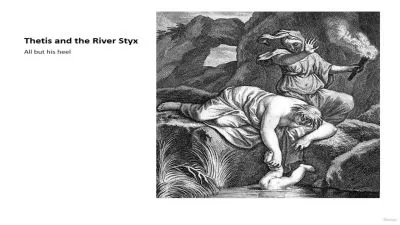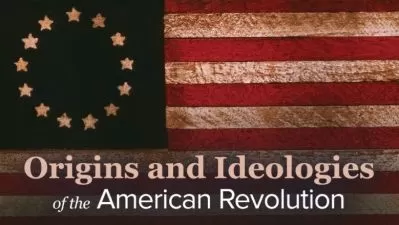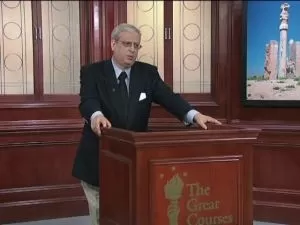Crimes of the Century: A Selective History of Infamy
Richard B. Spence
5:40:07
Description
The Zodiac Killer. The Son of Sam. The Lindbergh kidnapping. Over the past century, certain crimes have captured the imagination of the public, dominating the front pages of newspapers and inspiring armchair investigators for generations. At the heart of these “crimes of the century” is often a burning question: Who did it? Or, if the culprit is known, why did they do it?
Crime is perennially appealing because it takes us into the dark recesses of the human psyche. Murder, specifically, forces us to confront our own mortality, and it raises unanswerable questions about human nature, the social contract, and how well we truly know anyone—even those closest to us. From a serial killer’s decades-long crime spree to a conspiracy to commit political assassination, murder elicits mystery. And most of us cannot turn away.
Delve into some of the most infamous, ghastly, and mysterious crimes of the last hundred-odd years with Crimes of the Century: A Selective History of Infamy. Taught by Professor Richard B. Spence of the University of Idaho, this enthralling course gives you a dozen case studies of murders most foul. From an intriguing Irish domestic murder to a world-shaking political assassination, you’ll get an inside look at some of the most heinous and maddeningly unknowable crimes in modern history.
Contemporary tabloids may have offered salacious details as the crimes were unfurling, but today we have the beauty of hindsight to analyze the crimes. While many of the crimes remain as mysterious as when they occurred, the historian’s view allows us to situate the homicides in their time and place, which can give us insight into both the particulars of the era and something universal about human nature.
Whether you are a die-hard true crime fan or just interested in compelling stories about shocking events from around the world, Crimes of the Century: A Selective History of Infamy will open your eyes to the dark side of history—and humanity.
Bone-Chilling Mysteries
Consider the death of silent film director William Desmond Taylor. It remains a mystery, but we know today that he was not who he purported to be. Like a character out of a Hollywood thriller, he was originally an Irish immigrant who dropped his identity, moved across the country, and found fame and fortune under an assumed name in Tinsel Town. His murder highlighted the thin line between reality and fiction in a time when motion pictures were changing how people understood the world.
One of the most intriguing connections between crime and the culture that bore it is the case of Weimar Republic Germany. Germany, between the two world wars, suffered economic and political collapse, but it was also a period of psychological trauma. As Professor Spence notes, Weimer Germany has been referred to as an era of “voluptuous panic,” combining avant-garde culture, sexual hedonism, and existential dread.
In this era, you will study three serial crime sprees:
- The sadistic Peter Kürten,
- The “butcher” Fritz Haarmann, and
- The unsolved Hinterkaifeck Murders.
Considering this “unholy three” raises several questions: Was Weimar’s plague of madmen, sex fiends, and serial killers a symptom of a traumatized society? Did the horror and mass murder of the trenches birth the horrors and mass murders of the post-war years?
The 1920s and ’30s are home to several case studies you will see in this course. In France, the grisly story of the Papin sisters is less a “whodunnit” than a “why-dunnit.” In 1933, a lawyer returned home to find his wife and daughter lying in a pool of blood. In the attic, he found his two maids, the Papin sisters, cowering with a bloody hammer. What drove them to murder? The answer is still confounding all these decades later.
Conspiracies of Murder
Homicide always raises the question of who did it and why, but political assassinations add another element to the mystery of a horrific crime. Take the assassination of the archduke Franz Ferdinand by Gavrilo Princip, for example. As Professor Spence lays out, Princip’s actions are clear, but his motivations and potential co-conspirators remain a source of conjecture.
Given that the archduke’s assassination started World War I—and is arguably responsible for many of the horrors that followed in the 20th century—uncovering the truth behind the murder in Sarajevo in 1914 is a powerful question for historians.
Likewise, the assassination of Tsar Nicholas and the Romanov family during the Russian Revolution is rife with conspiratorial intrigue and competing motivations. To start with, rumors of the Romanov deaths preceded their actual assassinations. What was that about? Who was behind the rumors and the ultimate acts of murder?
The Darkest Corners of the Human Mind
Part of the intrigue of murder comes from the fact that it is the ultimate transgression. The willful taking of a human life crosses a boundary that can never be un-crossed. The study of murder undercuts our sense of normality—and even more importantly, it changes our understanding of human nature.
Consider the murder of Bridget Cleary by her husband, Michael, in Ireland in 1895, a story that has the feel of a fairy tale about it. A seemingly successful couple, the Cleary’s marriage took a wrong turn when Michael became convinced his wife was a “changeling,” a supernatural being posing as his wife. With her own family looking on, he attacked Bridget and ultimately killed her.
Could he actually have believed in magic? Is that any more unbelievable than David Berkowitz, the “son of Sam,” claiming he was possessed by an evil spirit and a member of a Satanic cult?
Murders sometimes have clear motivation—often things like money or revenge—but often the mystery is locked inside the mind of the killer. In its analysis of deranged killers, political conspiracies, and serial murderers, Crimes of the Century: A Selective History of Infamy takes you inside the darkest corners of the human mind, offering but a glimpse of the great unknown.
More details
User Reviews
Rating
Richard B. Spence
Instructor's CoursesRichard B. Spence is a Professor Emeritus at the University of Idaho. He holds a PhD in History from the University of California, Santa Barbara, where he also taught as a visiting assistant professor. His research areas include Russian and military history, espionage, occultism, secret societies, anti-Semitism, and true crime. He is the author of several books, including Trust No One: The Secret World of Sidney Reilly and Secret Agent 666: Aleister Crowley, British Intelligence and the Occult. He has also been a contributor for HISTORY®.

The Great Courses
View courses The Great Courses- language english
- Training sessions 14
- duration 5:40:07
- English subtitles has
- Release Date 2023/08/19





















